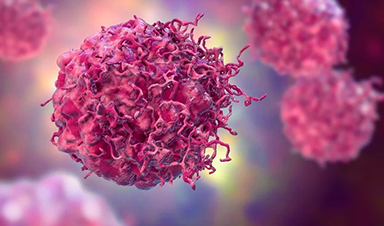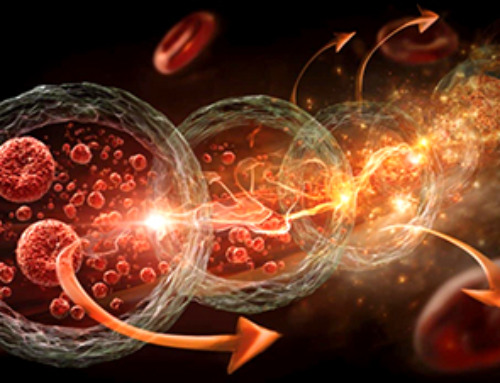Artificial nanomotors with advanced functions, such as motility and miniaturization, enabled the exploration of new strategies for cancer treatment. However, these nanorobots do not contain multiple functions that could help progress this technology rapidly.
In a recent study, researchers proposed a dual-source powered Janus nanomotor containing multiple photo-theranostic functions, for example, photodynamic therapy (PDT), surface-enhanced Raman scattering (SERS) sensing, photothermal therapy (PTT) and fluorescence imaging/photoacoustic imaging (PAI). This study is available as a pre-proof in Biomaterials.
Merits of Theranostics Approach in Biomedicine
The combination of diagnosis and therapy is referred to as theranostics. One of the key advantages of this strategy is that it enables image-guided therapy. Several light-sensitive bioimaging and therapeutic agents are available that allow remote controllability and non-invasiveness, with significant effectiveness.
Theranostic capacity has been immensely expanded with the development of PAI, which acts as micro/nano-carriers. Additionally, therapeutic methods, such as PDT and PTT, exhibited significant efficacy in cancer treatment. Although photo-theranostics has combined imaging and therapeutic modalities into a single platform for better clinical outcomes, formulating efficient imaging/therapy reagents has remained challenging.
Biomedically engineered micro-/nanomotors (MNMs) have been applied in microsurgery, minimally invasive treatment, and disease diagnosis. The development of synthetic MNMs-based nanoplatforms with active self-propulsion capacity at the nanoscale has enabled the precise targeting of tumor cells. Furthermore, this nanosystem is stable in the tumor microenvironment and has displayed enhanced cell and tissue penetration capacity. Therefore, the MNM-based nanoplatform has great potential in cancer photo-theranostics.
Development of Novel Nanomotors for Photo-Theranostics Application
Recently, researchers have designed a new photo-theranostic nanomotor by combining several diagnostic and therapeutic functions. They created up-converted nanoparticles (UCNPs) in multiple layered structures of NaYF4:Yb, Tm@NaYF4:Yb, and Nd@NaYF4, via thermal decomposition, whose average diameters were estimated to be approximately 29.1 nm, 42.7 nm, and 59.8 nm, respectively.
The UCNP nanocrystals were encapsulated by a mesoporous silica (mSiO2) coating layer, forming UCNPs@mSiO2 (UMS). Subsequently, the amino group was introduced onto the mSiO2 surface (UMS-NH2) and gold (Au) was sputtered to one side. Thereby, Au-functionalized Janus nanoparticles were formed, which were denoted as UCNP@mSiO2@Au (UMSA).
To equip the nanomotor with PDT, photosensitizer 5,10,15,20-tetrakis (4-aminophenyl) porphyrin (TAPP) was added to the surface of the mSiO2 forming UMSTA3. Scientists next modified TAPP with glutaraldehyde (GA). Finally, a catalase was added to UMSTA3 that served as a nano-engine to provide thrust force to the nanomotor (UMSTCA3). Because of its nanoscale dimension, UMSTCA3 nanomotors exhibited a high rotational diffusion coefficient
A specially designed software was written to measure the nanomotor trajectories. Analysis of the nanomotor trajectories showed higher H2O2 fuel concentrations promoted greater diffusiveness. Interestingly, the nanomotor’s motility could be increased by enhancing H2O2 concentration and application of NIR light.
The main functions of the UMSTCA3 nanomotor are to detect tumor cells, performing dual-modal bioimaging (PAI/FLI), and NIR-triggered phototherapy (PTT/PDT). This nanomotor uses H2O2 tumor biomarker sensing to achieve tumor cell sensing. PDT treatment is associated with producing reactive oxygen species (ROS) to eliminate tumor cells.
Taken together, the current multifunctional nanomotor is equipped with PTT, SERS, and PDT sensing functions. The combination of UCNPs and photosensitizer offers PDT, while the gold nano-shell offers SERS and PTT sensing.
Efficacy of Cancer Photo-Theranostics through in vivo and in vitro Studies
The photo-theranostic capability of the nanomotor was tested using cellular experiments and animal models. The biological safety profile of both UMSTA3 and UMSTCA3 nanomotors was analyzed. In vitro studies, using 3-(4,5-dimethylthiazol-2-yl)-2,5-diphenyltetrazoliumbromide (MTT) assays, demonstrated considerable biocompatibility and marginal cytotoxicity.
Compared to a single PTT treatment for cancer, UMSTCA3 nanomotors with synergistic phototoxicity of PTT and PDT eliminated cancer cells more efficiently. Additionally, the viability of cancer cells significantly decreased on elevating the NIR light dose. The live/dead assay also revealed that an increase in the NIR light significantly enhanced the number of dead cells.
Animal models were used to investigate the effectiveness of UMSTCA3 nanomotors in vivo. 4T1 tumor-bearing mice were injected with the newly designed nanomotors to test the effectiveness of nanomotors in cancer treatment. Tumor volumes of the treated mice were measured, and the result suggested that a single treatment of NIR laser irradiation or UMSTCA3 injection was insufficient to suppress cancer development. Maximum suppression of cancer cells was observed in mice treated with the combination of UMSTA3 and NIR laser at 808 nm.
In the future, more research is required to validate the findings. Also, the biocompatibility of the nanomotors needs to be assessed in further detail.
News
AI matches doctors in mapping lung tumors for radiation therapy
In radiation therapy, precision can save lives. Oncologists must carefully map the size and location of a tumor before delivering high-dose radiation to destroy cancer cells while sparing healthy tissue. But this process, called [...]
Scientists Finally “See” Key Protein That Controls Inflammation
Researchers used advanced microscopy to uncover important protein structures. For the first time, two important protein structures in the human body are being visualized, thanks in part to cutting-edge technology at the University of [...]
AI tool detects 9 types of dementia from a single brain scan
Mayo Clinic researchers have developed a new artificial intelligence (AI) tool that helps clinicians identify brain activity patterns linked to nine types of dementia, including Alzheimer's disease, using a single, widely available scan—a transformative [...]
Is plastic packaging putting more than just food on your plate?
New research reveals that common food packaging and utensils can shed microscopic plastics into our food, prompting urgent calls for stricter testing and updated regulations to protect public health. Beyond microplastics: The analysis intentionally [...]
Aging Spreads Through the Bloodstream
Summary: New research reveals that aging isn’t just a local cellular process—it can spread throughout the body via the bloodstream. A redox-sensitive protein called ReHMGB1, secreted by senescent cells, was found to trigger aging features [...]
AI and nanomedicine find rare biomarkers for prostrate cancer and atherosclerosis
Imagine a stadium packed with 75,000 fans, all wearing green and white jerseys—except one person in a solid green shirt. Finding that person would be tough. That's how hard it is for scientists to [...]
Are Pesticides Breeding the Next Pandemic? Experts Warn of Fungal Superbugs
Fungicides used in agriculture have been linked to an increase in resistance to antifungal drugs in both humans and animals. Fungal infections are on the rise, and two UC Davis infectious disease experts, Dr. George Thompson [...]
Scientists Crack the 500-Million-Year-Old Code That Controls Your Immune System
A collaborative team from Penn Medicine and Penn Engineering has uncovered the mathematical principles behind a 500-million-year-old protein network that determines whether foreign materials are recognized as friend or foe. How does your body [...]
Team discovers how tiny parts of cells stay organized, new insights for blocking cancer growth
A team of international researchers led by scientists at City of Hope provides the most thorough account yet of an elusive target for cancer treatment. Published in Science Advances, the study suggests a complex signaling [...]
Nanomaterials in Ophthalmology: A Review
Eye diseases are becoming more common. In 2020, over 250 million people had mild vision problems, and 295 million experienced moderate to severe ocular conditions. In response, researchers are turning to nanotechnology and nanomaterials—tools that are transforming [...]
Natural Plant Extract Removes up to 90% of Microplastics From Water
Researchers found that natural polymers derived from okra and fenugreek are highly effective at removing microplastics from water. The same sticky substances that make okra slimy and give fenugreek its gel-like texture could help [...]
Instant coffee may damage your eyes, genetic study finds
A new genetic study shows that just one extra cup of instant coffee a day could significantly increase your risk of developing dry AMD, shedding fresh light on how our daily beverage choices may [...]
Nanoneedle patch offers painless alternative to traditional cancer biopsies
A patch containing tens of millions of microscopic nanoneedles could soon replace traditional biopsies, scientists have found. The patch offers a painless and less invasive alternative for millions of patients worldwide who undergo biopsies [...]
Small antibodies provide broad protection against SARS coronaviruses
Scientists have discovered a unique class of small antibodies that are strongly protective against a wide range of SARS coronaviruses, including SARS-CoV-1 and numerous early and recent SARS-CoV-2 variants. The unique antibodies target an [...]
Controlling This One Molecule Could Halt Alzheimer’s in Its Tracks
New research identifies the immune molecule STING as a driver of brain damage in Alzheimer’s. A new approach to Alzheimer’s disease has led to an exciting discovery that could help stop the devastating cognitive decline [...]
Cyborg tadpoles are helping us learn how brain development starts
How does our brain, which is capable of generating complex thoughts, actions and even self-reflection, grow out of essentially nothing? An experiment in tadpoles, in which an electronic implant was incorporated into a precursor [...]





















